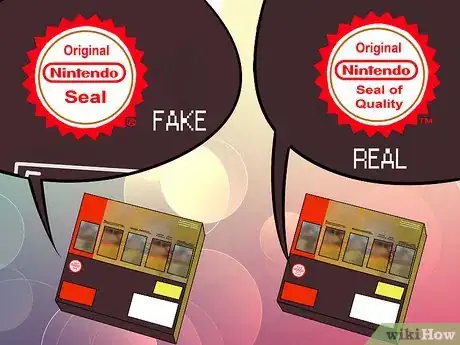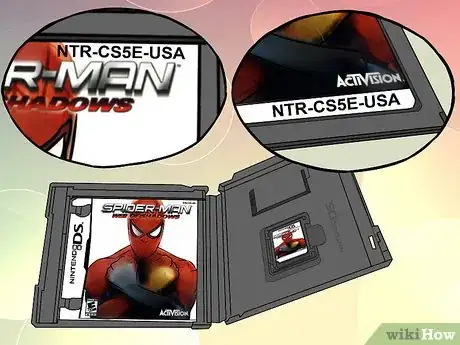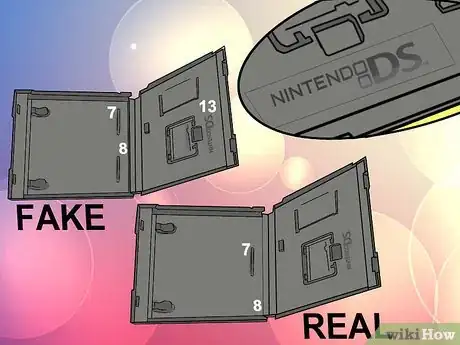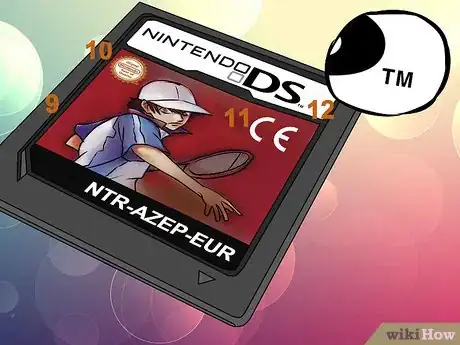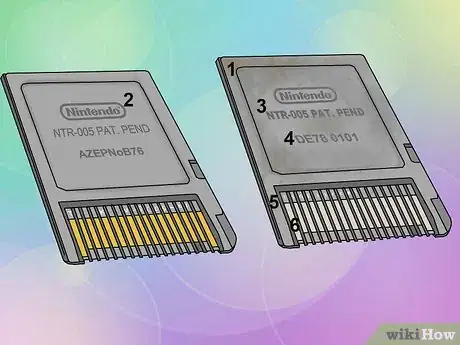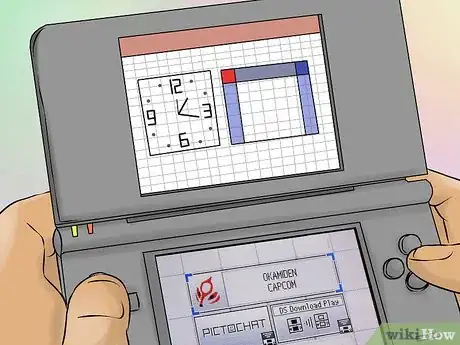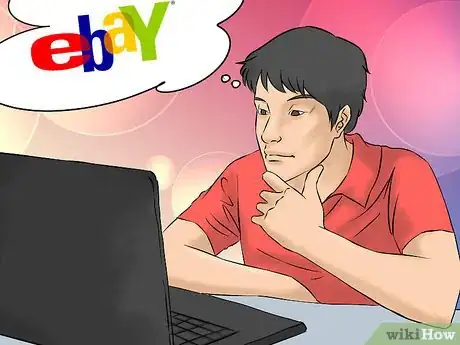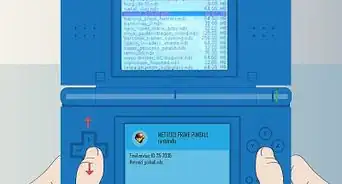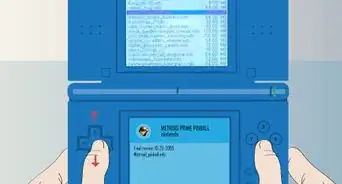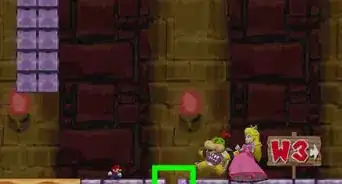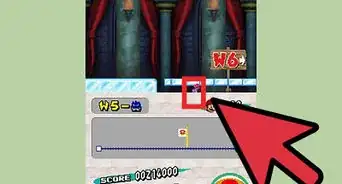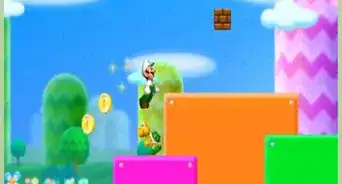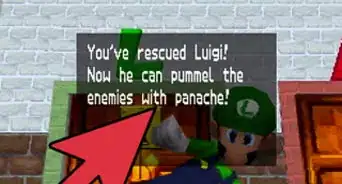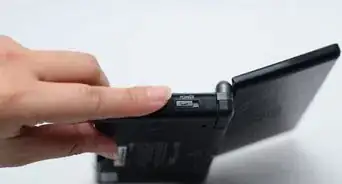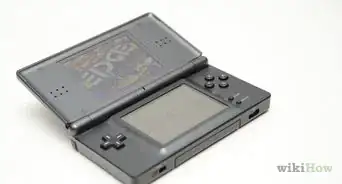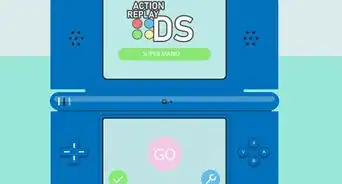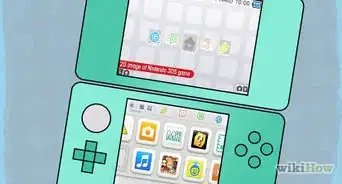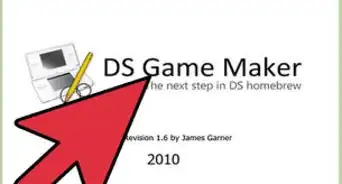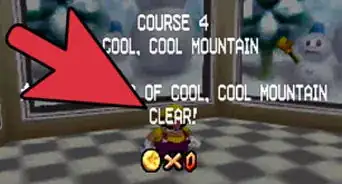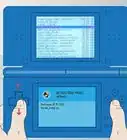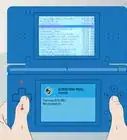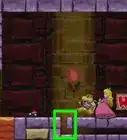X
wikiHow is a “wiki,” similar to Wikipedia, which means that many of our articles are co-written by multiple authors. To create this article, 19 people, some anonymous, worked to edit and improve it over time.
This article has been viewed 226,752 times.
Learn more...
So you've bought a DS game and you're worried it might not be as authentic as that eBay seller with 99% positive feedback claims? Well some knock-off games may be easy to spot, but sometimes it's more difficult to tell; this guide will point out a number of ways that you can spot the difference between a legitimate game and a fake.
Steps
-
1Look at the box. This is the very first indication of a not-so-authentic DS game. First off look at the text and the pictures on the front- are they poor quality or pixelated? If yes this suggests that it's not a real copy. Second off, take out the paper cover - it's usually always high quality glossed paper and some parts of it may be shiny. If it's just regular printing paper then it's not real. Next look at the back, there should be a seal verifying the game's authenticity (see picture), the image on the right shows what the European Nintendo seal should look like (note that the image on the left is the official seal for North American Nintendo releases - so if it looks like this it may be a North American copy of the game).
-
2Look at the inside of the box. First things first, is there a game booklet? If there is, it should be staple-bound and be in full colour. Once again, pixelated text or images suggest it's been made by someone other than Nintendo. In the image, (14) shows the serial number in the top right corner of the booklet and that the first 8 characters correspond exactly to those on the game cartridge - if there is no number it may indicate (though not always) that the booklet is fake. Often in pirate games there are no booklets due to the effort expended creating a fake one, but similarly if you're buying the game pre-owned the previous owner may have misplaced it so legitimate games may also be without one.Advertisement
-
3If there is no booklet, what else can we look at? Well it isn't too hard to pick up empty cases for DS games, but there are a few differences between those which contain authentic Nintendo products and those which do not. (7) in the image shows that the fake game has two separate nodes to hold in booklets; real Nintendo game boxes only have one. More subtly, (8), which is not visible in the picture, shows that the small protruding nodes on the spine of the game do not have a ring around them in authentic boxes, but they do in the fake boxes. This may seem like petty detail, but the pirates who take your money for fake games don't expect you to be so vigilant when identifying these kinds of errors. One more thing that is easy to check from the box is that in real games, the box has the 'Nintendo DS' logo embossed directly onto the plastic of the box. If there is no logo, the game is a fake for sure. However sometimes in fake games the logo is there but it is stuck on with adhesive to the inside of the box, rather than printed onto the box directly. If you look at the image (13), you can see a very faint line around the logo- this is definitely a sticker job and an indicator of a very sneaky pirate! If there is no line or evidence of the logo being stuck on, then your product is quite probably legitimate.
-
4Time to look at the cartridge itself! Take the game out of the holding clip, and take a look at the front. There are a few things we want to look at. First off look at the sticker- it should be glossy and have rounded corners with the bottom left corner having a chip out of it. The text should be legible and not pixelated, and it should be in full colour. The image shows three examples of legitimate DS games; (9) shows that on each cartridge there is a small 'instep' where the plastic is marginally lower in order to accommodate the sticker, this is big indicator of an authentic game so if there isn't this ridge, it's almost certain your game is a fake. (10) shows that on every game there should be an identical official seal, usually in the bottom left corner somewhere. If there isn't one, the game is likely to be fake. (11) all European DS games have this CE symbol on them and it is always in the bottom right corner, if there isn't a CE marking on a European game, it's likely an imposter. (12) shows the Nintendo DS logo, most games fake or not have this symbol BUT often fake games miss off the 'TM' at the end of the logo, this is a sure fire indication that your game is fake.
-
5Alright now we've seen the front, let's turn it over and have a good look at the back. The indicators on the back are more subtle, but more likely to indicate a game's questionable authenticity. In the image, (1) shows the join at the back of the cartridge, if it's neat and barely visible, the game is all good, however if it's shabby and obvious, it suggests a fake. (2) shows the Nintendo logo, which always has a 'TM' after it in legit games, but not necessarily in fake ones. (3) is difficult to make out from the image, but the words are much bolder in a fake game, this works best if you have a game you are sure is real to compare it against. (4) shows the serial number of the game, now this is difficult to check but often DS games will have a serial number that starts with A or B, and which corresponds to the middle four letters on the sticker on the front of the cart. This is difficult to check for certain though. (5) shows the chipboard visible through the slats of the casing - there should be numbers and letters visible on the green board, however you may have a fake copy which says 'Nintendo' there instead- that is a certain indicator of a copy. (6) There is a slight difference in the colour of the metal strip visible between the plastic slats, which indicates the use of non-Nintendo hardware- not good.
-
6So if you've performed all of the above steps and found nothing suspicious, that is a pretty good indication that you've picked up a legitimate Nintendo product. It's time to put it in your console and see what happens, since everything appears to be safe. When the start-up screen appears, take a look at the entry for the DS game- if the text description matches the game and the image is both present and believable then you have yourself a proper copy of the game.
-
7Give yourself a pat on the back for selecting a good eBay seller and not falling into the trap of buying a fake Nintendo DS game.
Advertisement
Community Q&A
-
QuestionWhat happens to the person who sells me fake games?
 Community AnswerNothing really happens to them unless they get reported to the police and they can prove they are selling fraudulent merchandise.
Community AnswerNothing really happens to them unless they get reported to the police and they can prove they are selling fraudulent merchandise. -
QuestionI've had my Pokemon Diamond game for years. It has everything except that CE logo thing. Actually, none of my games have it. Is it fake or not?
 Community AnswerThe CE mark is a mark that is used on product manufactured or made to be sold in Europe and is only on European Games. You likely have a North American version of the game, which does not have that symbol. Don't worry though, your game is likely real.
Community AnswerThe CE mark is a mark that is used on product manufactured or made to be sold in Europe and is only on European Games. You likely have a North American version of the game, which does not have that symbol. Don't worry though, your game is likely real. -
QuestionWhat happened if all the steps are right, and it doesn't look fake, but when I put it in the system, the entertainment for the game is blank. I have already cleaned it several times.
 Community AnswerYou were likely scammed; try to get your money back if you bought it online.
Community AnswerYou were likely scammed; try to get your money back if you bought it online.
Advertisement
Warnings
- Pirated games are not intended to be compatible with your console, and they could contain dangerous software and pose a physical risk to your console. It's very important to check a game and ensure it is safe to use before you put it in your DS.⧼thumbs_response⧽
Advertisement
About This Article
Advertisement
